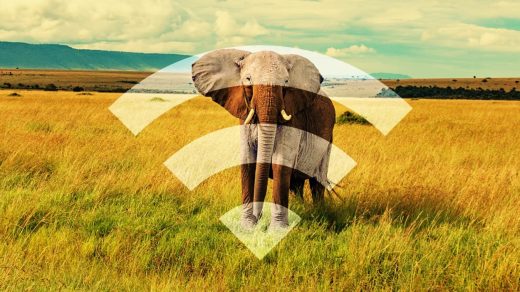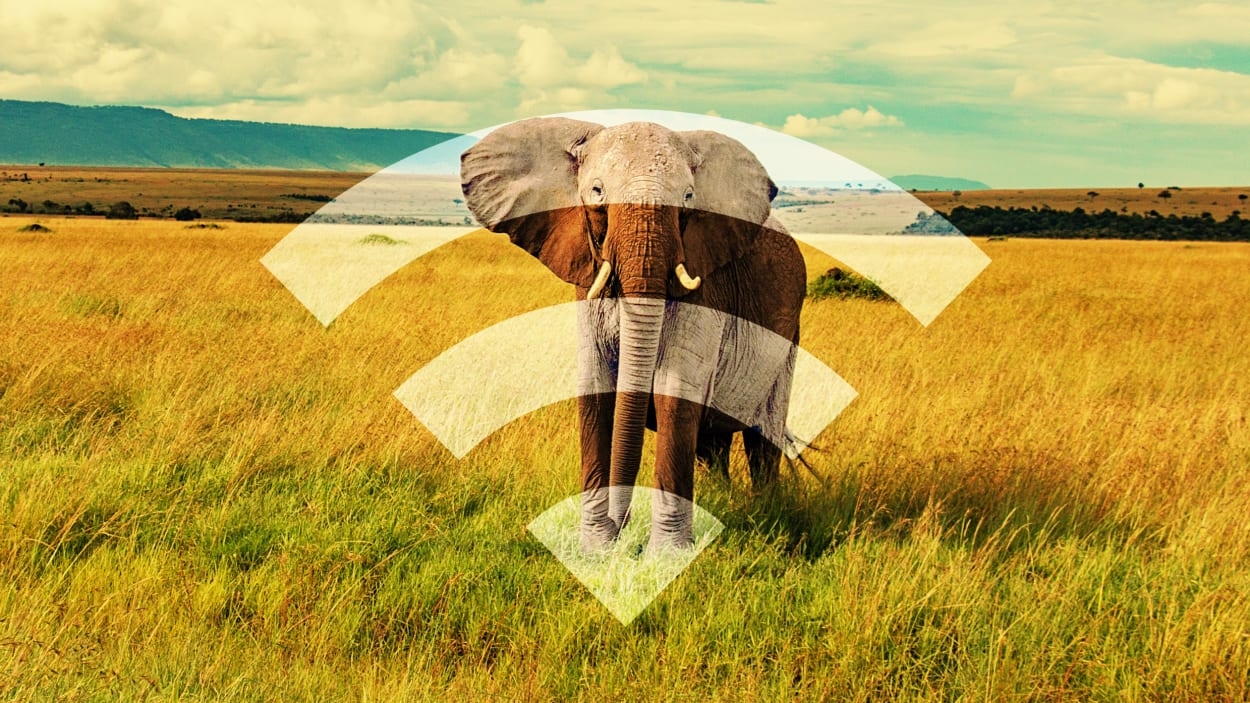How Africa’s largest IoT conservation network supports wildlife protection
By Linda Rosencrance
Northern Rangelands Trust (NRT) and Connected Conservation Foundation are protecting the most vulnerable animals and natural resources in Kenya with Africa’s largest landscape-wide Internet of Things conservation network.
The project aims to enhance wildlife and natural resource conservation by leveraging cloud-based sensors and networks to collect, monitor, and analyze environmental data in real time.
This massive undertaking will contribute critical digital infrastructure to help Kenyan partners measure and achieve the global biodiversity targets set out at COP 15, the 2022 UN biodiversity conference, to conserve and manage at least 30% of the world’s natural habitats by 2030.
The data combined with analytics and conservation tools are geared toward effectively protecting and managing wildlife, ensuring peace, and improving the livelihood of the people of northern Kenya, says Samuel Lekimaroro, wildlife protection manager at Northern Rangelands Trust, a Kenyan conservation organization that works to protect and restore the Northern Rangelands of Kenya.
NRT’s IoT conservation network: the first in Kenya
The NRT’s Internet of Things (IoT) conservation network, the first of its kind in Kenya, is made possible by the Connected Conservation Foundation, which has brought together a coalition of private- and public-sector partners including Cisco, Actility, 51 Degrees, and EarthRanger.
The IoT network and high-bandwidth communication backbone currently covers about 7.4 million acres of wilderness in Kenya—a figure that includes 22 of NRT’s community-led conservancies and 4 private reserves with plans to bring more on board to include more of the region, says Sophie Maxwell, executive director of the Connected Conservation Foundation. More than 190 new sensors have been deployed to all parks, with more scheduled in the next few weeks, bringing the total to 250.
For this project, the LoRaWAN network management is done using Actility’s ThingPark platform. While Actility is on the network side, Cisco builds the LoRaWAN gateways or base stations and Actility manages the base stations and the end devices to collect the data and provide the data to application servers.
“What we provide is the core network that connects the base station and the end devices,” says Alper Yegin, chief technology officer at Actility, a provider of low-power networks that play a vital role in IoT infrastructure. “Then on the technical side, there are also sensors coming from various device makers as well as NRT and Connected Conservation.”
NRT and Connected Conservation manage the parks and identify what the use cases are and then they bring all the technologies together. As such, NRT and the Connected Conservation Foundation are the users of this deployment and Cisco is the technology provider, according to Yegin. “We’re providing an innovative solution to manage gateways, integrate sensors, and monitor network operations in real time,” he says.
Revolutionizing conservation programs
The capabilities of this IoT technology are revolutionizing the way conservation programs operate, offering long-lasting, cost-effective, and secure sensors to combat poaching and protect endangered species, Yegin says.
The LoRaWAN IoT sensors are perfect for deploying in the wildlife parks, tracking animals, tracking equipment and vehicles, tracking weather conditions as well as for monitoring the working conditions of machinery, Yegin says. And since the sensors have very low power consumption, once they’re placed on the animals, they can last for nearly 10 years, sometimes more, he says.
“The other special thing with this technology is that it uses unlicensed band, meaning one does not have to acquire a very expensive and limited license from the government,” Yegin says. “So it’s pretty much like Wi-Fi today—anyone can put up Wi-Fi and the same is true for LoRaWAN. As such, this also drives the cost down, which is essential in such wide-area deployments.”
Wildlife protection is a perfect use case for LPWAN IoT, given the vast territories to monitor, the necessity for long-lasting, low-cost sensors, and the requirement for secure technology to combat poaching, he says.
The various sensors, which include rhino, lion, cheetah, and leopard trackers, livestock trackers, and ranger and vehicle trackers, provide critical data that is then visualized in EarthRanger for analysis and insights so that NRT can take any necessary conservation actions. EarthRanger is a tool that collects, integrates, and displays all historical and real-time data available from a protected area to enable organizations to make better decisions about how to manage those areas.
For example, data from the ranger, vehicle, and wildlife sensors enable rangers to monitor and respond to rhino threats to prevent poaching, share information on sick or vulnerable animals, boost conservation management strategies, and redeploy security measures between conservancies.
Increase in endangered black rhino population
Black rhinos are still critically endangered animals because of the demand for rhino horns on the international black market. Kenya, however, is one of the few places in the world where black rhino populations are increasing due to the success of these conservation efforts, Maxwell says.
Consequently, it’s crucial to establish safe and connected rangelands for these endangered species to roam, according to Maxwell.
Having the tags on the rhinos enables the NRT to remove the fences and create larger connected habitats for the rhinos to roam, she says. And it has helped boost the black rhino numbers in Kenya by 10%.
“The technology is what we call a reserve-area network solution—and that is connectivity, communications, and sensors that bring real-time data back into an operations room,” she says. “That data is then visualized on the map through a range of software and that enables people to track the movement of people, the movement of wildlife, and the movement of the ranger teams. And that all happens in real time.”
The battery-powered LoRaWAN-enabled sensors communicate via a long-range, ultra-low data rate connection, resulting in longer battery life. Additionally, LoRa sensors are a fraction of the cost of satellite tracking tags—transforming how conservation programs operate because being able to deploy many sensors means capturing more data, enabling NRT to demonstrate the effectiveness of its conservation efforts, which is really valuable, according to Maxwell.
“Previously, NRT and our member conservancies used an analog system, and we were unable to observe what was happening in the landscape in terms of wildlife trends, asset monitoring, and security patrol coordination,” Lekimaroro says. “We were only communicating via radio between the conservancies and the Joint Operations and Communications Center (JOCC).”
Through Connected Conservation, NRT is now able to successfully protect and monitor wildlife, coordinate field patrols, and support the government and communities in peace efforts from an informed point of knowledge/data assessed by EarthRanger, according to Lekimaroro.
“All field patrol teams can be monitored and supported by the team in headquarters, which is the central location, from the JOCC,” he says. “Through technology, intra- and inter-conservancy communications have improved, allowing for more efficient surveillance, wildlife protection, and monitoring operations.”
The increased data transmission into the centralized JOCC system has helped the NRT assess patrol efforts, wildlife trends, patterns, and data generation for management decision making, Lekimaroro says.
(21)



